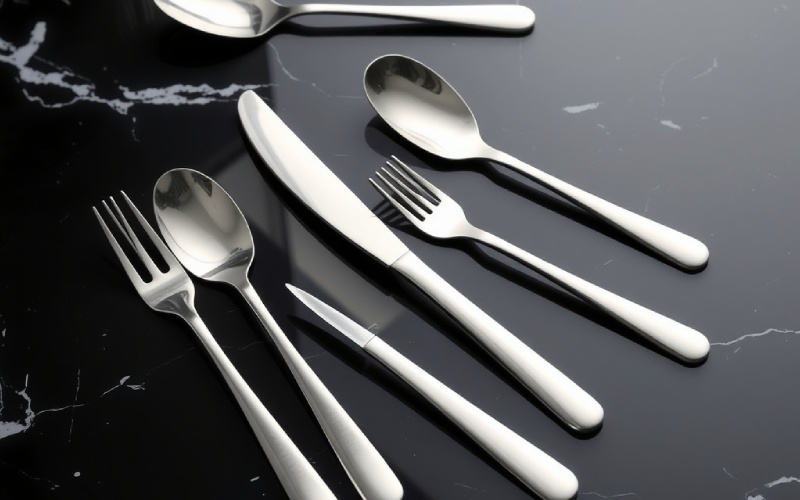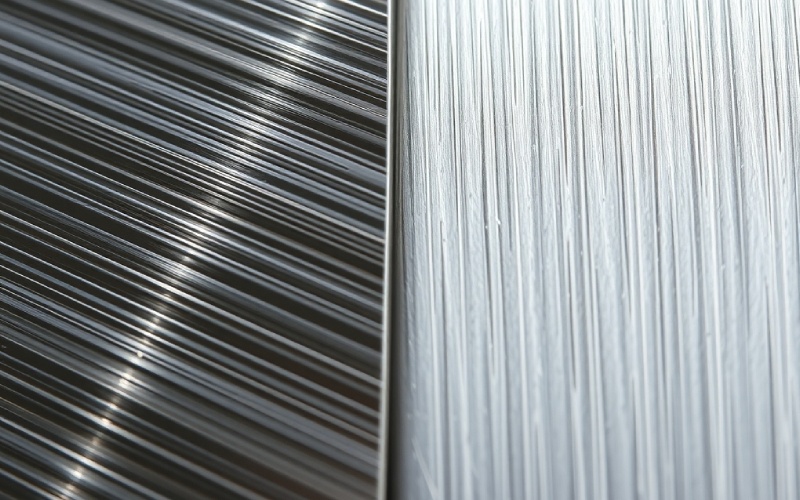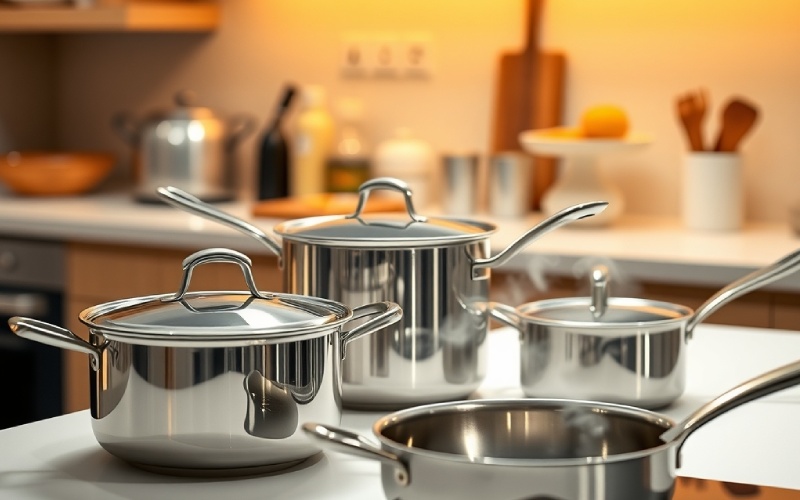Let Istar help you get started on your project with our experience and know-how!
Upload your design files and production requirements and we will get back to you within 30 minutes!

Have you ever asked yourself what the numbers on your forks and spoons mean? I know I have. When I first looked for new things for my kitchen, I saw “18/10 stainless steel” on many items. I did not know what it meant, but it seemed like a big deal. And it is! This number tells you a lot about how good and strong your spoons and forks are. In this article, I am going to share everything I have found out about 18/10 stainless steel. We will look at what makes it the top choice for flatware and why you should know about it.
When you see “18/10” on stainless steel, it tells you about the mix of metals inside. Stainless steel is an alloy. An alloy is a mix of different metals. The numbers “18/10” tell you the amount of two key parts that are added to the steel. These parts are chromium and nickel. The first number, 18, means that the steel has 18% chromium. The second number, 10, means it has 10% nickel. These two parts are very important for how good the stainless steel is.
The chromium is a very important part of the mix. It is the part that helps the stainless steel fight off rust and other damage. You can think of it as a shield that protects your flatware. The nickel is also very important. It also helps fight off damage, and it gives the stainless steel its bright, shiny look. The more nickel there is, the more shiny and pretty the flatware will be. So, these small numbers are a fast way to know you are getting a very good product.
Making 18/10 stainless steel is a really neat process. It begins by melting down the basic materials in a big furnace. These materials include iron, chromium, and nickel. This creates a hot liquid alloy. This special kind of stainless steel is also called 304 grade stainless steel. The way it is made creates a material that is strong but also easy to give shape to. Because the alloy is soft, it can be formed into the pretty shapes of pots, pans, and flatware.
After the alloy is made, it is pressed between big rollers while it is hot. This makes it the right thickness. The last steps are to shape and polish the metal. This creates the final product that you buy in a store. Adding the chromium and nickel alloys is what makes this kind of stainless steel so great. It makes a material that can last a long time and stand up to being used every day.
I have learned that for forks and spoons, 18/10 stainless steel is seen as the best you can buy. There are a couple of reasons for this. The large amount of nickel gives it a lovely, bright shine that does not go away. This means your spoons and forks will keep looking nice after many uses and washes. When you hold a piece of 18/10 flatware, you can feel that it is good. It has a nice weight and feels steady in your hand.
The ability of 18/10 stainless steel to last a long time is another big reason why it is the best choice. This type of steel is very good at fighting off rust and other damage. This is because of the mix of chromium and nickel. This means your flatware will last for many years, even if you use and wash it daily. Cheaper kinds of stainless steel might get stains or rust spots. But 18/10 is made to last for a very long time.
It is good to compare 18/10 stainless steel with other common kinds to see what is different. You will often see 18/8 and 18/0 stainless steel for sale. You can probably guess what the numbers mean. 18/8 stainless steel has 18% chromium and 8% nickel. It is still a good material and is good at fighting rust. But it has a little less nickel than 18/10.
The biggest difference is when you compare it to 18/0 stainless steel. This kind has 18% chromium but almost no nickel, less than 1%. Because it has so little nickel, 18/0 stainless steel is not as good at fighting damage and can get rusty more easily. It also does not have the same shiny look as 18/10. 18/0 costs less money. But 18/10 works the best and will last longer.
Here is an easy table to compare the different kinds:
| Stainless Steel Grade | Chromium Amount | Nickel Amount | How Well It Fights Damage |
|---|---|---|---|
| 18/10 | 18% | 10% | The Best |
| 18/8 | 18% | 8% | Very Good |
| 18/0 | 18% | 0% | Not as Good |

One of the most important things for anything that touches your food is being safe. I was glad to find out that 18/10 stainless steel is a very safe material for pots, pans, and flatware. It is safe because the chromium and nickel alloys are held together very strongly inside the steel. This strong hold means that it is not likely for the metals to get into your food.
The chromium in the steel sticks to the surface of the stainless steel and protects it from rust. The nickel helps stop other kinds of damage. This means the metal is very stable. So, it can be used with hot, cold, and sour foods and will not have a bad reaction. With lower-quality, worse stainless steel, there can be a chance of nickel getting into food. But with 18/10, you can feel good knowing your flatware is safe for you and your family.
There are many good things about picking 18/10 stainless steel for your kitchen. I have found that it is a material that really does what it promises. The biggest good thing is how well it fights damage from rust and stains. This means it can handle being used and washed every day. It can also touch different kinds of food without getting rusty or stained.
Another great thing is that it lasts for a long time. This kind of stainless steel is made to last, so it is a smart purchase for your house. It is also very simple to clean and take care of, which is a big help for me. The large amount of nickel not only makes it stronger but also gives it a pretty, lasting shine. This makes your dinner table look very nice. Lastly, because it does not react with things, it will not change how your food tastes.
Here is a quick list of the main good things:
I have learned that nickel is a very important part of what makes stainless steel flatware so good. Its main job is to make it better at fighting off damage. When nickel is added to the stainless steel alloy, it makes the flatware much less likely to get damaged. This is very true when it touches sour foods or water. This is a very big plus for something you use and wash every single day.
Besides protecting the metal, nickel is also what gives 18/10 stainless steel its pretty, silver-like shine. It makes the flatware look more polished and gives it a fancy look and feel. The larger amount of nickel in 18/10 stainless steel is what makes it better than cheaper kinds. It is the best choice for pretty flatware that will last a long time. The fact that it is strong and shiny makes it the best material for using every day and for special meals.

Taking care of your 18/10 stainless steel flatware is simple. That is one reason I like it so much. To keep it looking its best, it is a good idea to rinse your flatware right after you use it to get any food off. If you wash it by hand, use a gentle soap and a soft sponge. You should not use rough cleaners or steel pads. These can scratch the metal. After washing, make sure to dry your flatware well with a soft towel to stop water spots.
Most 18/10 stainless steel flatware can be washed in a dishwasher, which is very helpful. For the best results, do not put too much in the basket for silverware. This will help stop scratches. It is also a smart idea to take the flatware out of the dishwasher right after it is done. Then, dry any water that is still on it to keep it shiny. With just a little bit of care, your 18/10 flatware will stay pretty for many years.
When you are set to buy 18/10 flatware, there are some things to check to be sure you get the best kind. First, always look on the box or the item description for the “18/10” mark. This will tell you it has the right amount of chromium and nickel. You should also hold a piece of the flatware if you are able to. Good 18/10 stainless steel will feel heavy and balanced in your hand.
Look for a smooth feel with no sharp spots. The shine should be bright and the same all over. A higher price usually means it was made better and has a better finish. It might be easy to choose a cheaper set. But putting your money into a good set of 18/10 flatware is a good idea in the long run because it will last a long time and stay pretty.
From what I have seen, 18/10 stainless steel is for sure worth the money. It might cost more than other kinds of stainless steel. But you are paying for something that is better, will last longer, and works better. This is a material that is made to last for a very long time. So, you will not need to buy new flatware every few years. The great way it fights damage means it will keep looking good, even if you use it a lot.
When you think about the safety, the long life, and the classic look of 18/10 stainless steel, the higher cost at the start is understandable. It is a purchase that makes your kitchen and your home better. For me, having good flatware that I can count on every day is a small treat that makes a big difference. Knowing it is safe and enjoying a pretty, well-made tool makes it the top choice.